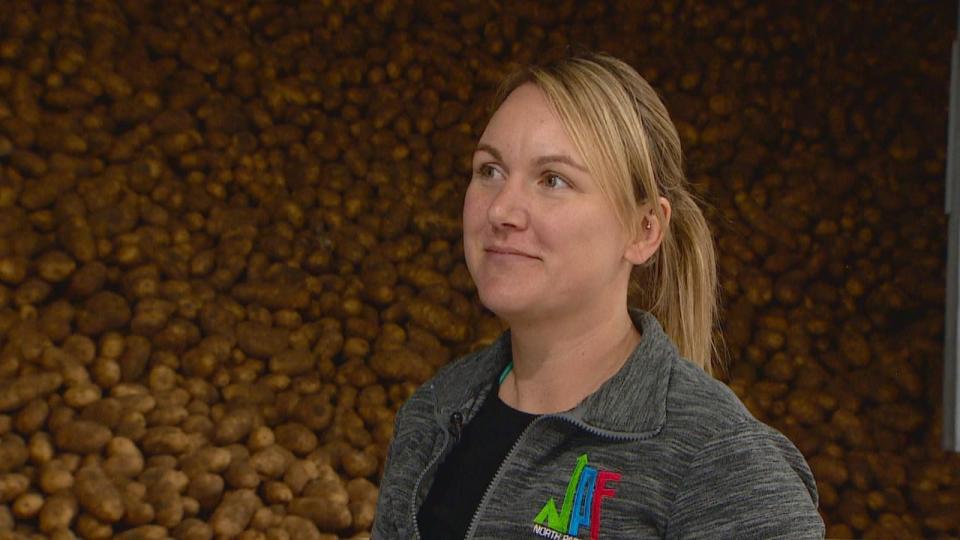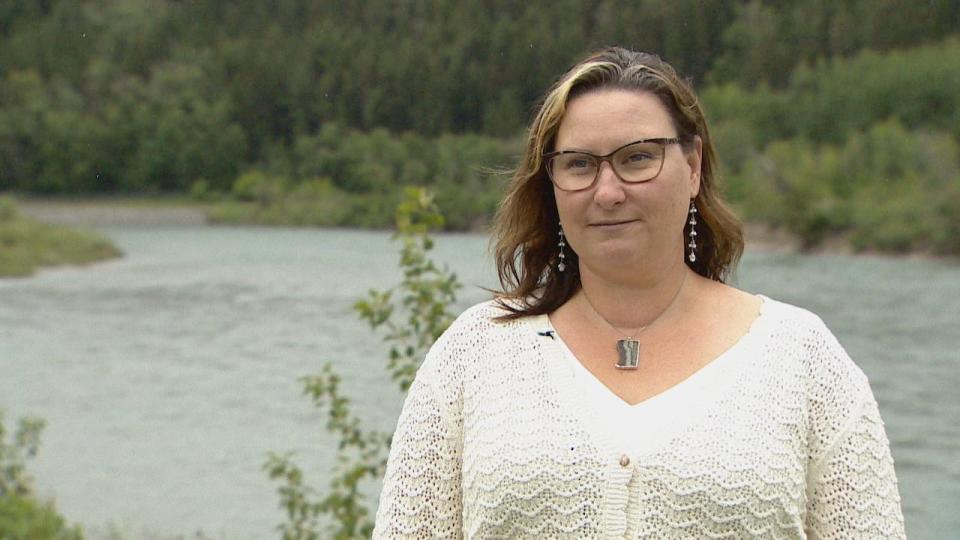In April at North Paddock Farms, located southern of Taber, Alta., Alison Davie and hubby Michael had been nervous regarding the months forward.
“It was very, very dry,” Davie acknowledged in a gathering just lately. “We thought, oh my goodness.”
The ranch, element of theSt Mary River Irrigation District, had its water allocation cut in half in April, after a very dry winter season influenced snowpack and storage tank space for storing.
The ranch ready its plant technique as vital, additionally in search of to briefly purchase water allotments inside the watering space.
And after that, May got here.
“It just rained and rained and rained,” Davie acknowledged.
That took the stress off the watering interval, notably for wheat vegetation within the space.
The months that adhered to confirmed the colourful nature of ranch life.
More rainfall dropped in June, nonetheless July introduced a return to heat and fully dry issues. Scattered tornados and showers vital August, although Davie’s ranch prevented the results of hail storm.
“We have so far been spared. We are looking forward to another harvest season coming up here pretty quick,” Davie acknowledged.
“Overall, the crops are looking really good.”


Alison Davie of North Paddock Farms claims the process started its incorporate regarding 2 weeks again. Soon, the ranch will definitely get happening potatoes. All knowledgeable, the ranch is anticipating a typical plant this yr. (Monty Kruger/ CBC)
Timely rainfall reworked the ton of cash of the farming interval all through the watering space, which is the best in Canada.
The space had the flexibility to bump up its water allowance by an inch, acknowledged fundamental supervisor David Westwood.
“I wouldn’t say that all our problems are cured. But compared to what we were concerned about, it’s actually turned out to be, I would say, an actual adequate or decent year … it really did reverse our fortune,” he acknowledged.
The present panorama
Drought issues in Alberta differ all through numerous areas at numerous instances of the yr. It implies the dry spell story has really landed in several methods all through the district.
Going proper into the springtime, water levels in southerly Alberta storage tanks had been extremely diminished, consisting of the Oldman Reservoir, the place near-record lows had been videotaped.
Experts had been fastidiously checking the circumstance that was creating in southerly Alberta, acknowledged Trevor Hadwen, an agroclimate skilled with Agriculture and Agri-Food Canada
“Water supplies were extremely low. We were really concerned with the soil moisture as we were coming off of a number of years of drought,” Hadwen acknowledged.
The springtime rains permitted a quick therapeutic of provide of water along with grime wetness.
While some places actually didn’t receive the wished wetness, typically, issues enhanced all through a lot of southerly Alberta, Hadwen acknowledged. The southwest fringe of the district continues to be fairly listed beneath common, whereas the southeast edge is primarily over common.
“The driest pocket of the province right now has been the area just northwest of Calgary, from Calgary up to Edmonton, and over to the Hinton area,” Hadwen acknowledged.
“That area has been the dry pocket this summer, setting up for some poor crops in that region and some continued drought conditions from previous years.”


Departure from typical rainfall in Alberta, from April 1 toAug 26. (Agriculture and Agri-Food Canada)
But it doesn’t inform the complete story.
There are lasting shortages in a lot of Alberta, Hadwen stored in thoughts. The district hasn’t seen the type of damp yr that will surely counter fully dry issues for fairly a very long time, and massive areas nonetheless have shortages of better than 300 millimetres over the earlier 4 years.
“That makes us vulnerable, right? That allows us to go into drought fairly quickly, or our water supplies to diminish even more rapidly,” Hadwen acknowledged.


Departure from typical rainfall in Alberta over the earlier 4 years. (Agriculture and Agri-Food Canada)
Long- time period obstacles
Many farmers in Alberta are undoubtedly eased at their reworked lot of cash in what resembled an alarming increasing yr. But obstacles linked to Alberta’s lasting dry spell suggestions method proceed to be, notably when it pertains to its provide of water.
For years, there have really been issues that southerly Alberta can outpace its water supply— which is firmly managed– notably amidst surging populations and the possibility of more frequent and severe droughts sooner or later.
“Obviously, that increases the demands on our water supply, not only in terms of municipal usage … but also in terms of agriculture,” acknowledged Tricia Stadnyk, a trainer and Canada Research Chair in hydrologic modelling with the University of Calgary’s Schulich School of Engineering.
“We have a commitment within this province to actually expand irrigation-based agriculture. It kind of begs the question, where’s that water coming from?”
In June, a document from the University of Calgary’s School of Public Policy stated that tension over water was possible in between Calgary and its neighbors as populaces increase.


Tricia Stadnyk, a trainer and Canada Research Chair in hydrologic modelling with the University of Calgary’s Schulich School of Engineering, claims Alberta actually didn’t receive enough rains to offset a recurring scarcity. (Monty Kruger/ CBC)
Stadnyk in contrast the circumstance to a financial savings account: if a financial savings account mosts prone to $10,000 adversarial, and a particular after that will get income of $2,000, they’re nonetheless in a net-deficit circumstance.
“Water is no different. Think of it as units stored. And if our environment was lacking units for a three-year period, just because we get a little bit of rain over the short-term doesn’t mean that we’re out of the danger zone,” she acknowledged.
“What we find out about this specific space of Canada is, not solely has it traditionally been the driest in Canada, it should proceed to be dry, if not drier, sooner or later.
“This is something that Calgarians and Albertans actually require to concentrate on if we wish to have the capability to expand our district and expand our economic climate.”

